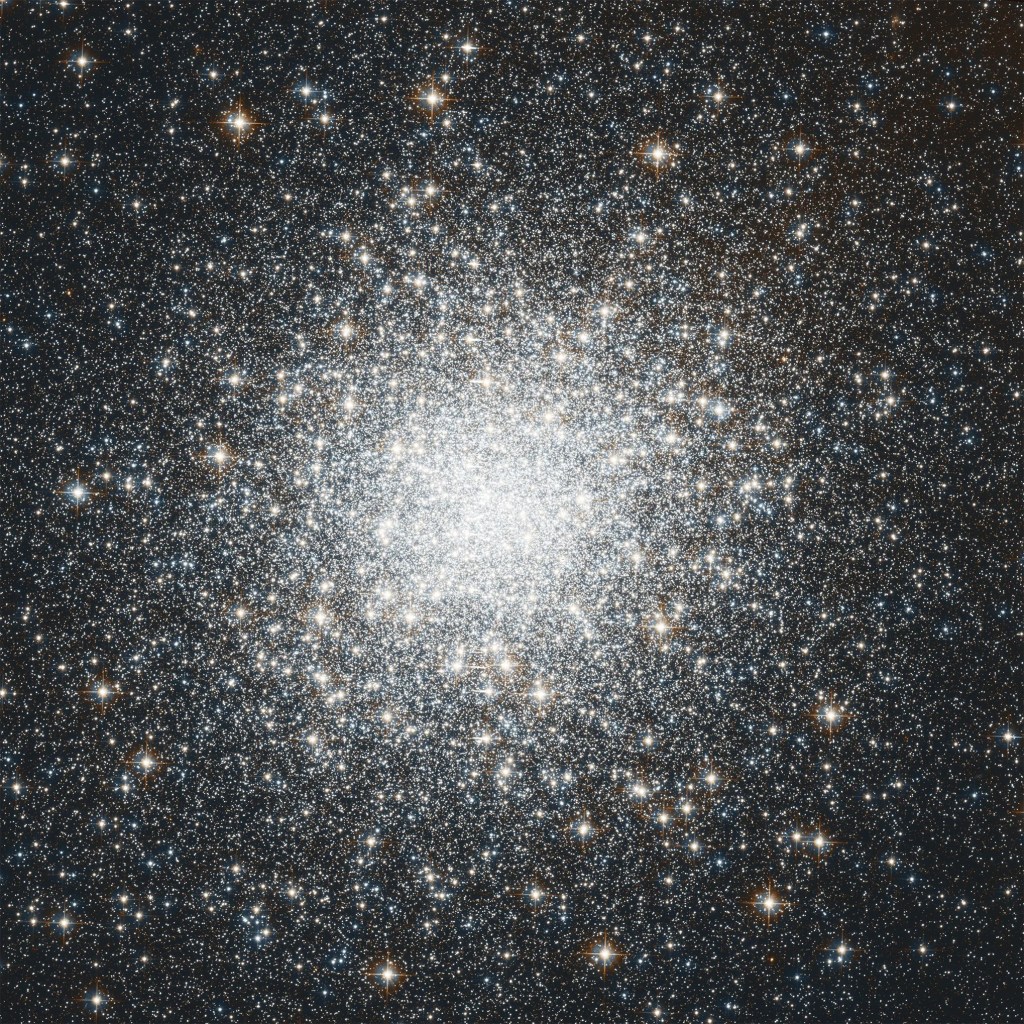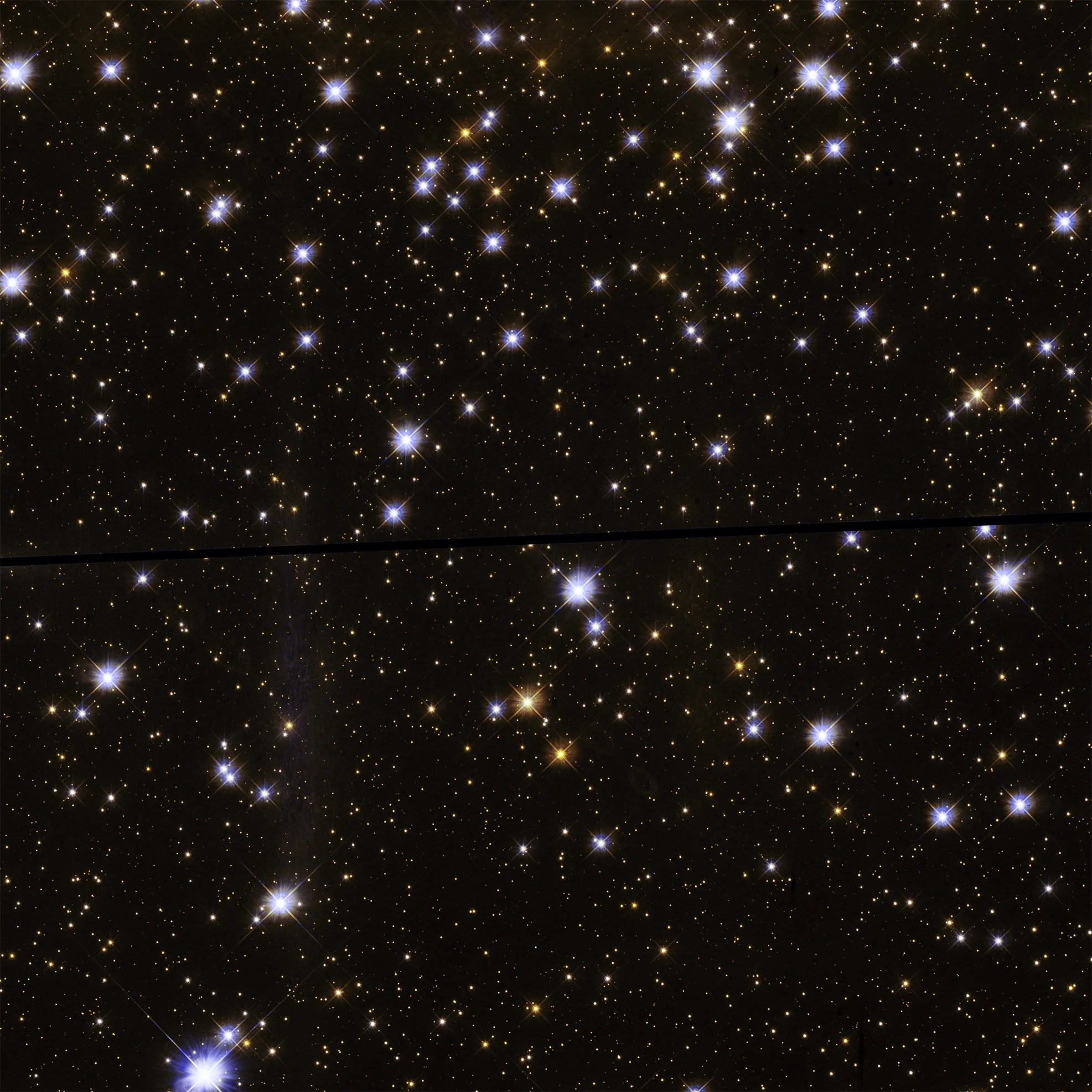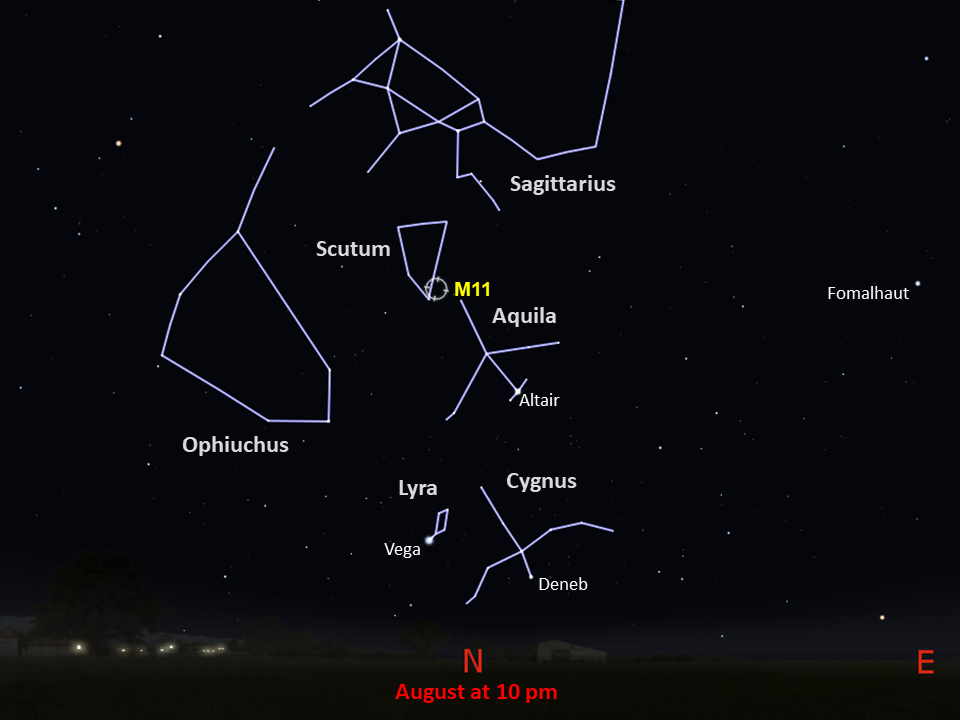Messier 11
This cluster's brightest stars form a rough V-shape that resembles a flock of migrating waterfowl, giving it the common name of Wild Duck Cluster.
Distance
6,200 light-years
Apparent Magnitude
6.3
constellation
Scutum
object type
Open Cluster
Messier 11 is one of the few open star clusters in the Messier catalog that has been observed by Hubble. Unlike the many globular clusters Hubble has imaged, open clusters are groups of stars that are only loosely bound by gravity. The lifespans of open clusters are relatively short when compared to those of globular clusters. This is because the gravitational interactions between members of open clusters are comparatively weak, so stars do not remain bound for long before they are drawn away by stronger gravitational forces.
Also known as the Wild Duck Cluster for the roughly V-shaped arrangement of its brightest stars, M11 was discovered by the German astronomer Gottfried Kirch in 1681. It is located 6,200 light-years from Earth in the constellation Scutum and has an apparent magnitude of 6.3. Of the 26 open clusters included in the Messier catalog, M11 is the most distant that can be seen with the naked eye. The best time to spot the cluster is in August. M11 is one of the most densely populated open clusters known. Containing over 2,900 stars, it appears as a triangular patch of light through a pair of binoculars.
This Hubble image of a portion of the cluster was created using observations at visible and ultraviolet wavelengths. The black stripe through the middle of the image results from a gap between the two detectors of the camera that made the observations.
For more information about Hubble’s observations of Messier 11, see:
Explore Hubble's Messier Catalog
The following pages contain some of Hubble’s best images of Messier objects.

Overview The Messier catalog, begun by astronomer Charles Messier in the 18th Century and revised over the years, includes some…

Better known as the Crab Nebula, Charles Messier originally mistook Messier 1 for Halley’s Comet, which inspired him to create…

Hubble's image of Messier 2 is comprised of visible and infrared wavelengths of light.

































